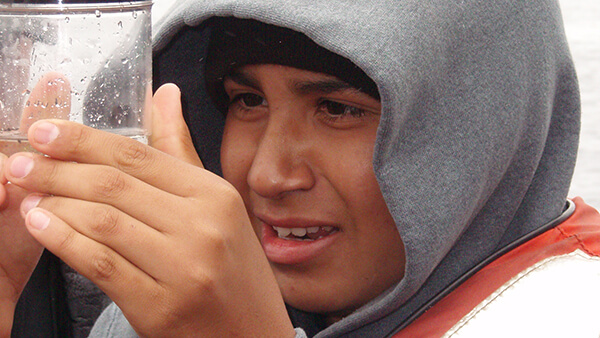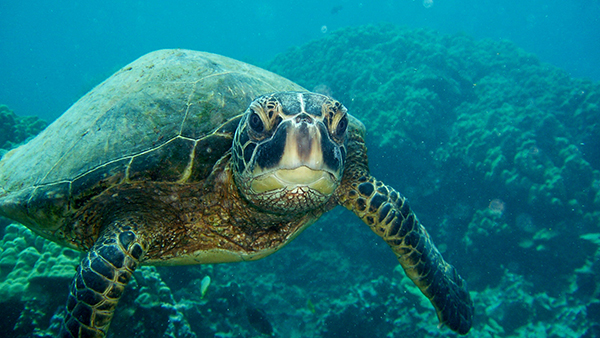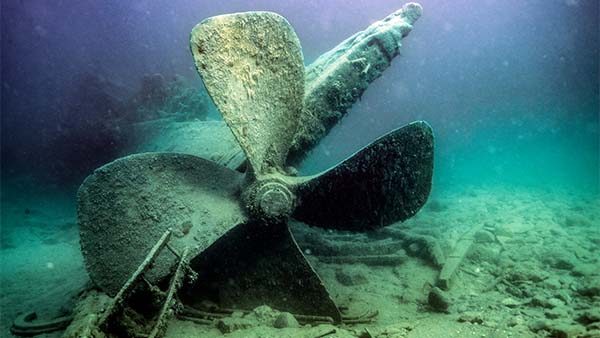In celebration of the 50th anniversary of the National Marine Sanctuary System, the best of the best educational materials for an elementary school audience have been compiled in collaboration with the National Park Trust. Discover Spectacular with these education and outreach digital materials focused on 10 exciting topics!

Human activities are changing Earth’s climate. When humans burn fossil fuels like coal, oil, and natural gas for energy, it changes the Earth’s climate by releasing excess or rampant carbon into the atmosphere. It is our job to protect people and places from harm caused by a warming planet. Before we can take action to limit the impacts of rampant carbon dioxide, we have to understand what causes it and how it impacts our environment.

The ocean absorbs about 30% of the carbon dioxide (CO2) that is released in the atmosphere. As levels of atmospheric CO2 increase from human activity, such as burning fossil fuels (e.g., car emissions) and changing land use (e.g., deforestation), the amount of carbon dioxide absorbed by the ocean also increases. Try a hands-on activity that demonstrates what can happen to animals like coral, clams, and crabs when the ocean becomes more acidic and explore additional online materials.

Our ocean is filled with items that do not belong there. Huge amounts of plastics, metals, rubber, paper, and textiles, lost fishing gear, derelict vessels, and other discarded items enter the marine environment every day. This makes marine debris one of the most widespread pollution problems facing the world's ocean and waterways. Discover how marine debris makes its way into the diet of seabirds, while also practicing a technique commonly used by scientists. Explore many other resources too.

Kelp forests harbor a greater variety and higher diversity of plants and animals than almost any other ocean community. Many organisms use the thick blades as a safe shelter for their young from predators or even rough storms. These underwater towers of kelp provide food, shelter, and protection for all kinds of marine life, including seals, sea lions, sea otters, invertebrates, fish, whales, birds, and more. Learn more about kelp forests and threats this unique underwater ecosystem faces.

Coral reefs are some of the most diverse ecosystems in the world. Coral polyps, the animals primarily responsible for building reefs, can take many forms: large reef building colonies, graceful flowing fans, and even small, solitary organisms. Thousands of species of corals have been discovered; some live in warm, shallow, tropical seas and others in the cold, dark depths of the ocean. Find out what corals are and why they are so important to be on your way to becoming a coral expert!

Sea turtles breathe air, like all reptiles, and have streamlined bodies with large flippers. They are well adapted to life in the ocean and inhabit tropical and subtropical ocean waters around the world. Want to learn about sea turtles, their habitat, why they are endangered, and what you can do to help? You came to the right place! Of the seven species of sea turtles, six are found in U.S. waters. Learn more about these sea turtles and the threats facing them.

From the white sharks that silently patrol the Greater Farallones to the graceful hammerheads that congregate at the Flower Garden Banks, sharks are some of the national marine sanctuaries' most beautiful - and important - underwater residents. Let’s learn about sharks by watching lots of videos about different species of sharks, downloading a fun coloring book to discover the sharks and rays of the Channel Islands, and much more!

Whales are one of the oldest and largest animals on the planet. Various whale species can be found around the world from Alaska to Hawai`i to the Gulf of California. Dive into learning about humpback whales and listen to the sounds these whales use for communication, orientation and navigation, hunting prey, and avoiding predators, and courtship. The noises made by whales are not the only sound happening underwater! Explore many videos and lessons that let you sink deeper.

A seabird is a bird that depends mostly on the ocean for its survival. Approximately 150 bird species live, breed, and migrate in the ocean waters surrounding North America. Introduce yourself to the birds of the National Marine Sanctuary System and explore the fascinating seabirds that call Olympic Coast, Cordell Bank, and Stellwagen Bank national marine sanctuaries home. You can also learn how marine debris impacts seabirds and download an activity book.

Exploring shipwrecks is a great way to learn about history and science! This unit is broken down into three sections: the D.M. Wilson wreck, the USS Monitor wreck, and general shipwreck learning activities. Feel free to pick and choose from the videos, VR dives, and hands-on activities below to create your own custom learning experience, or do them all. Explore the wreck detective hands-on activities that will help you become a maritime archaeologist!